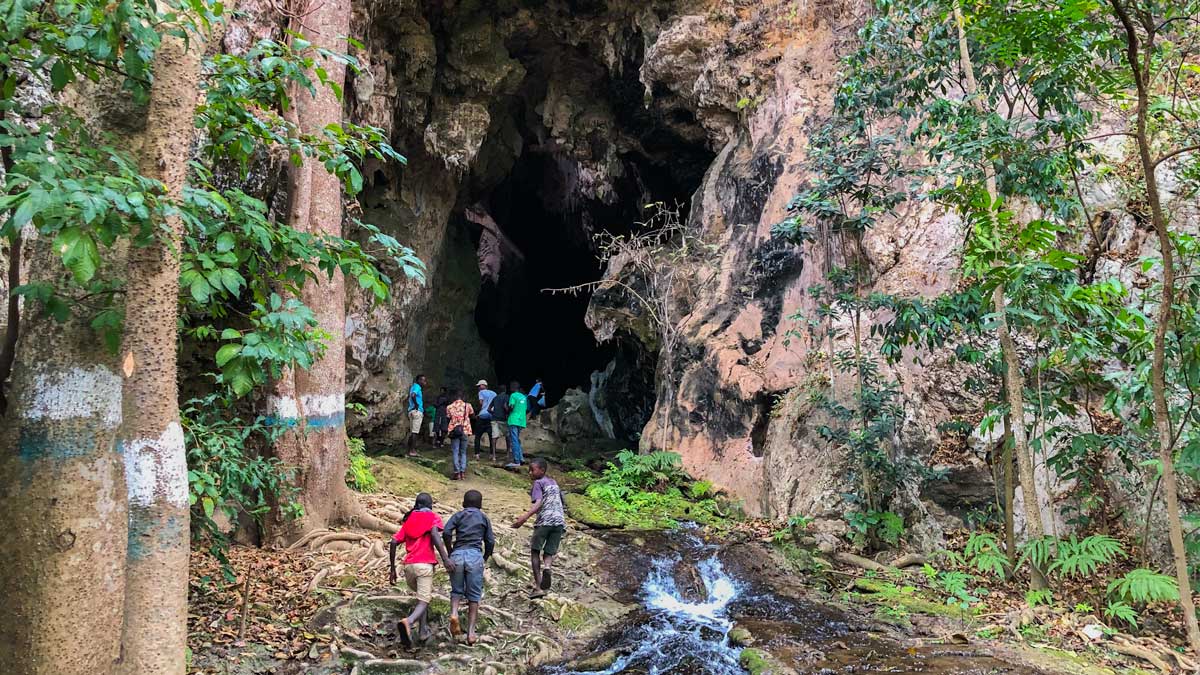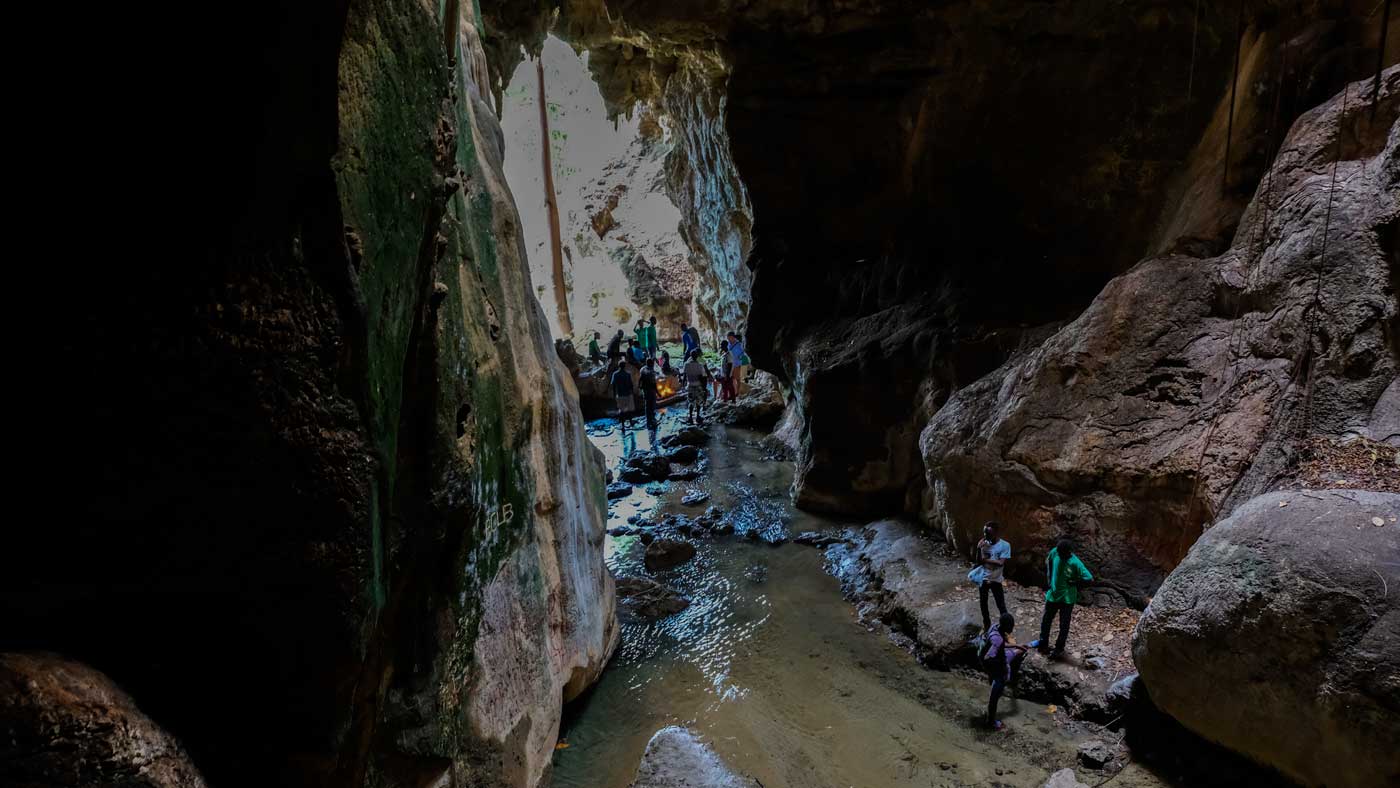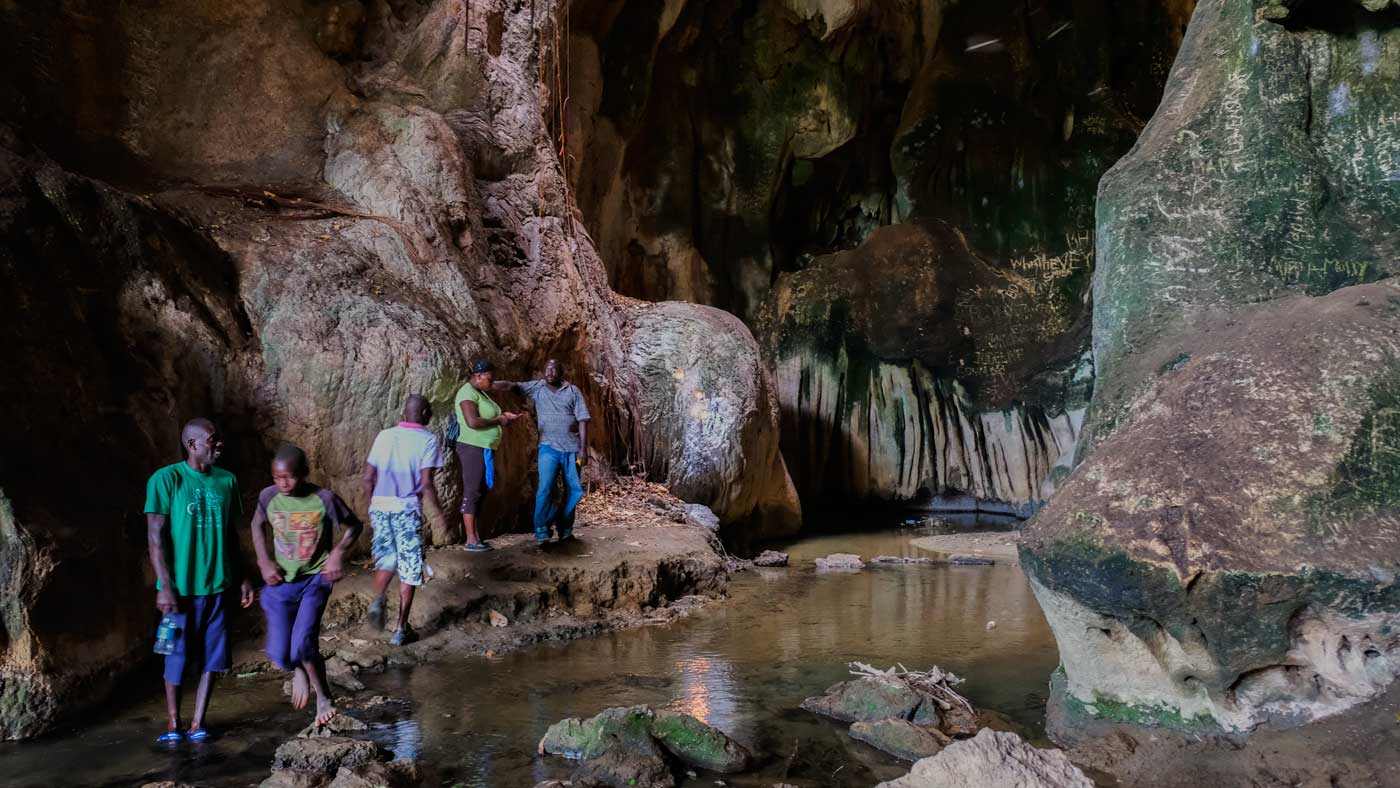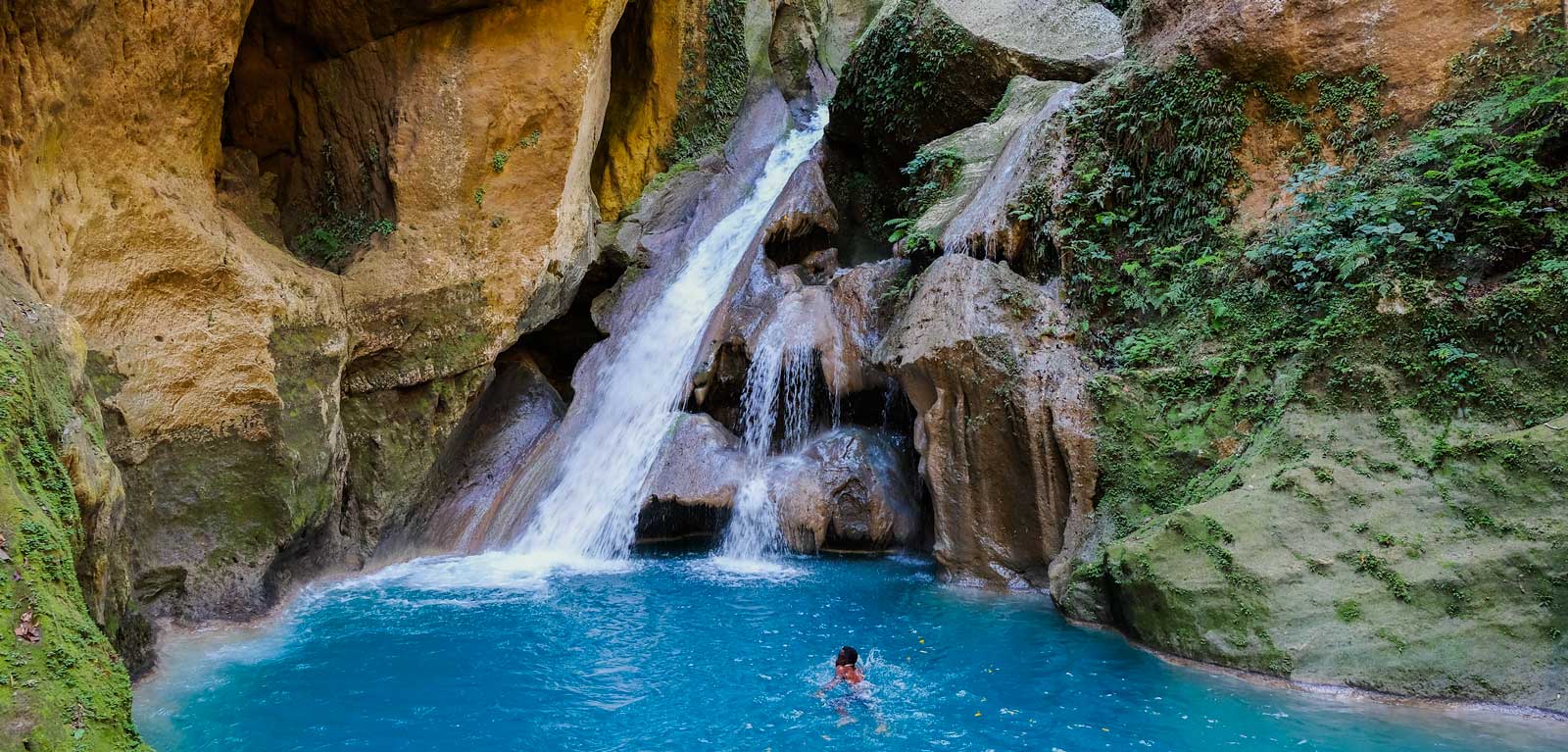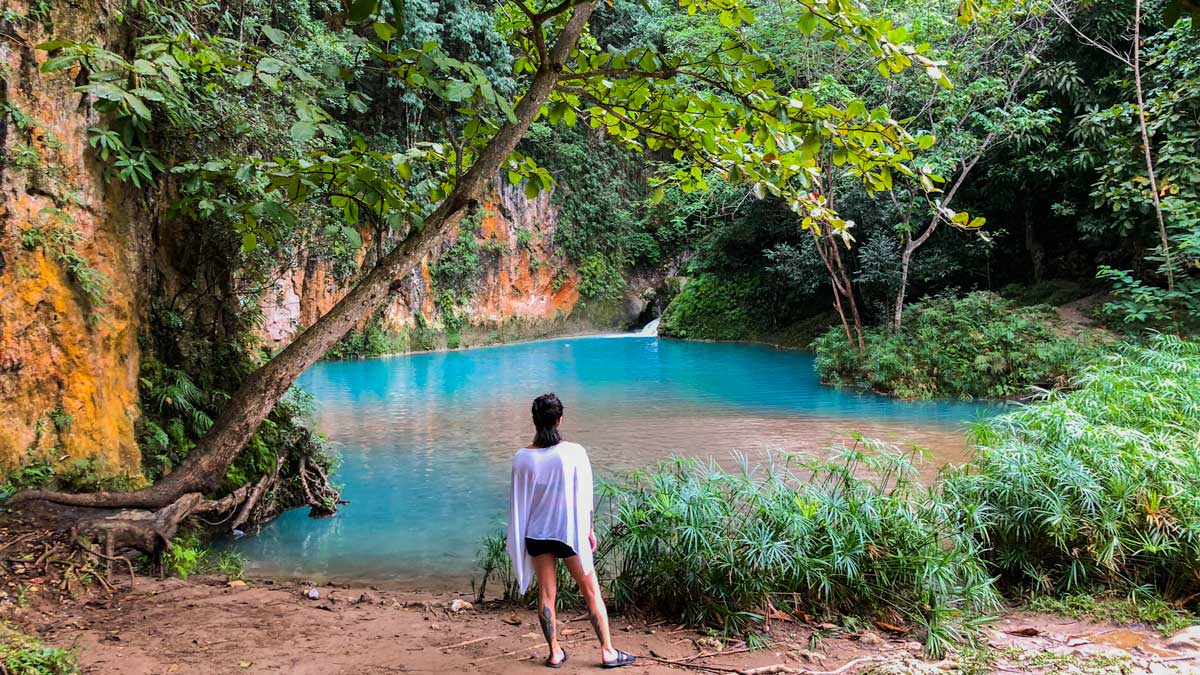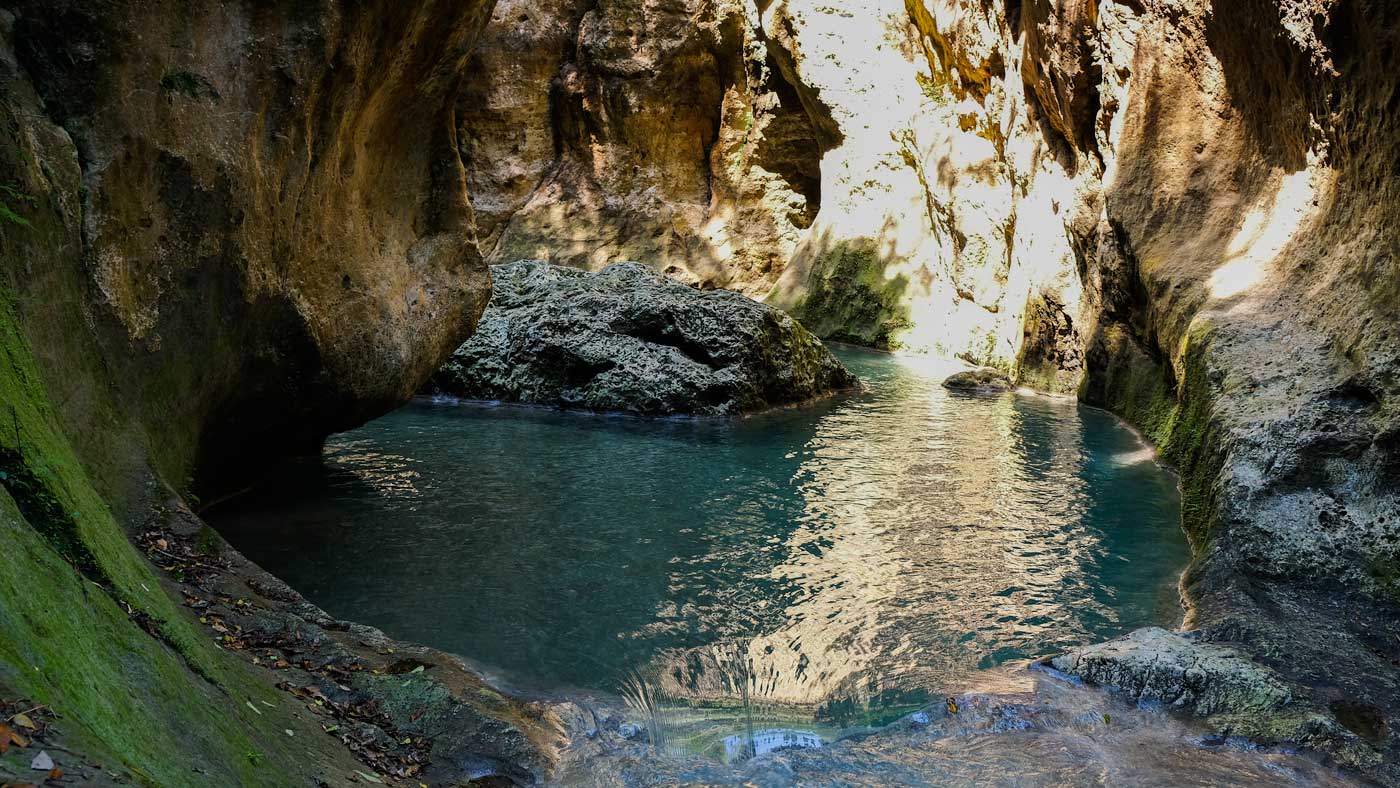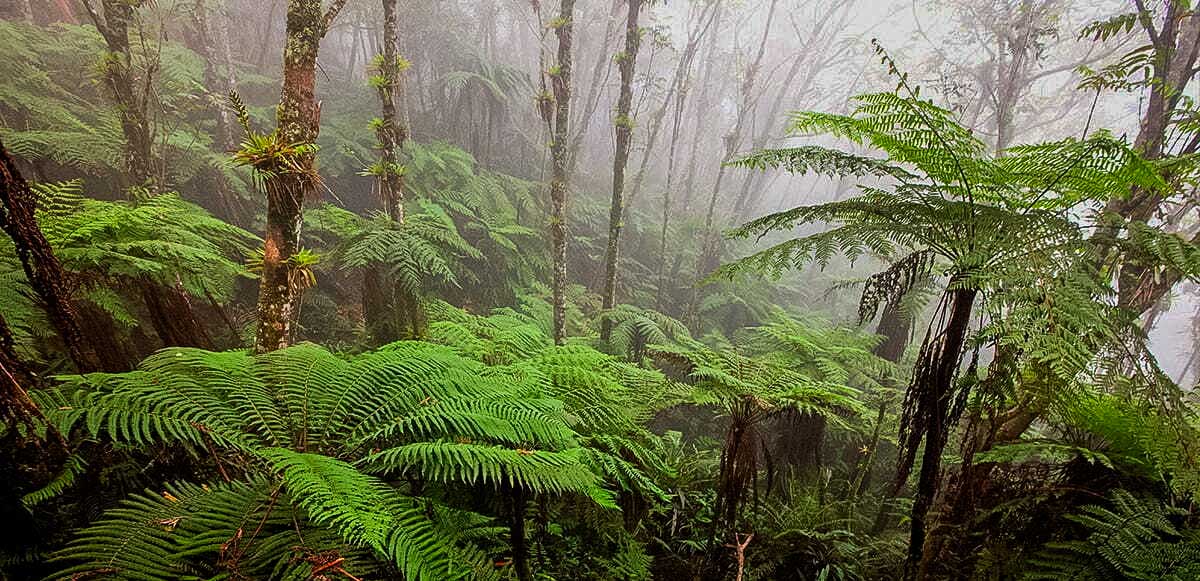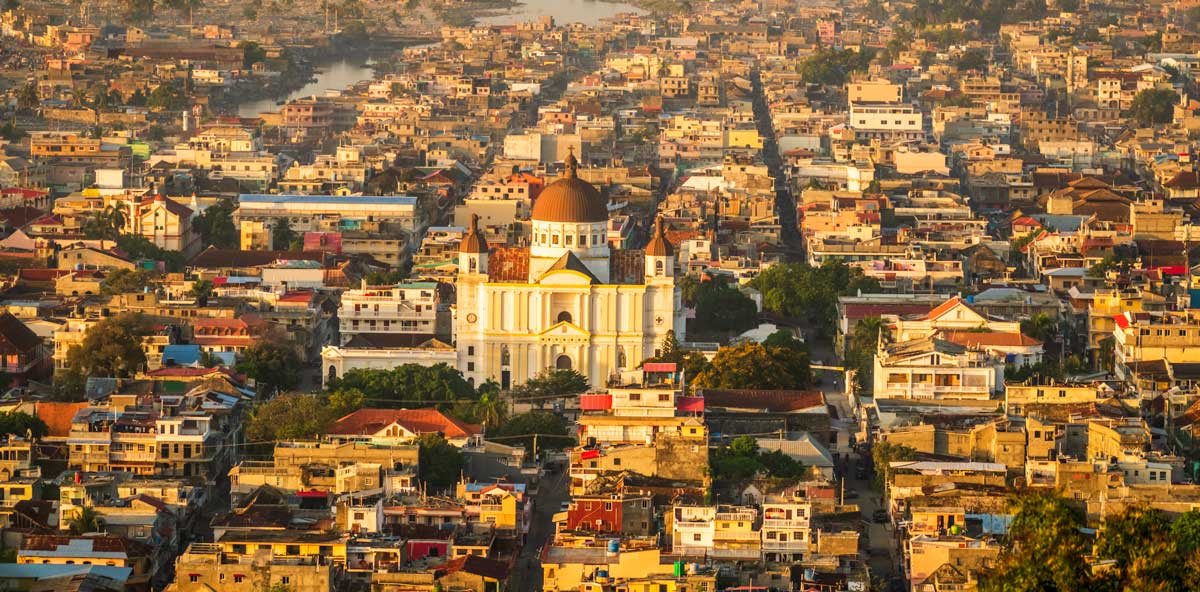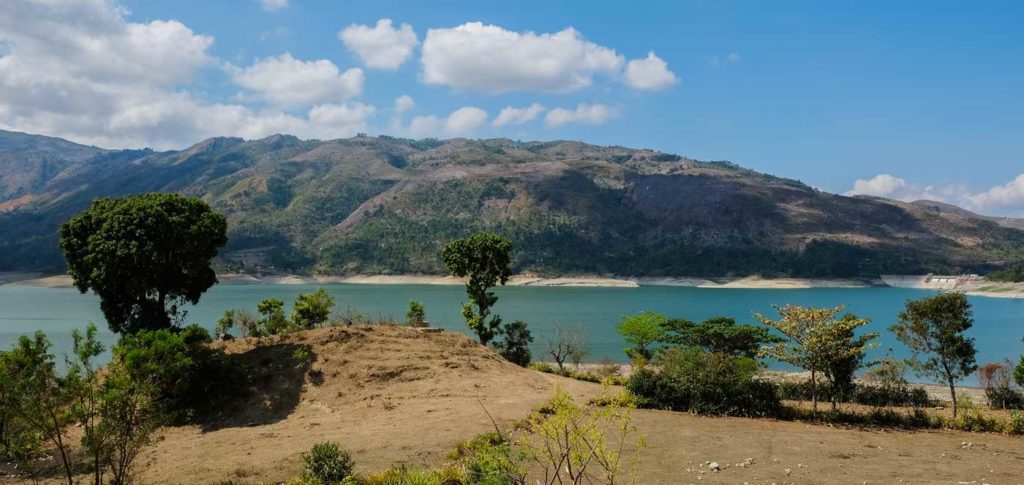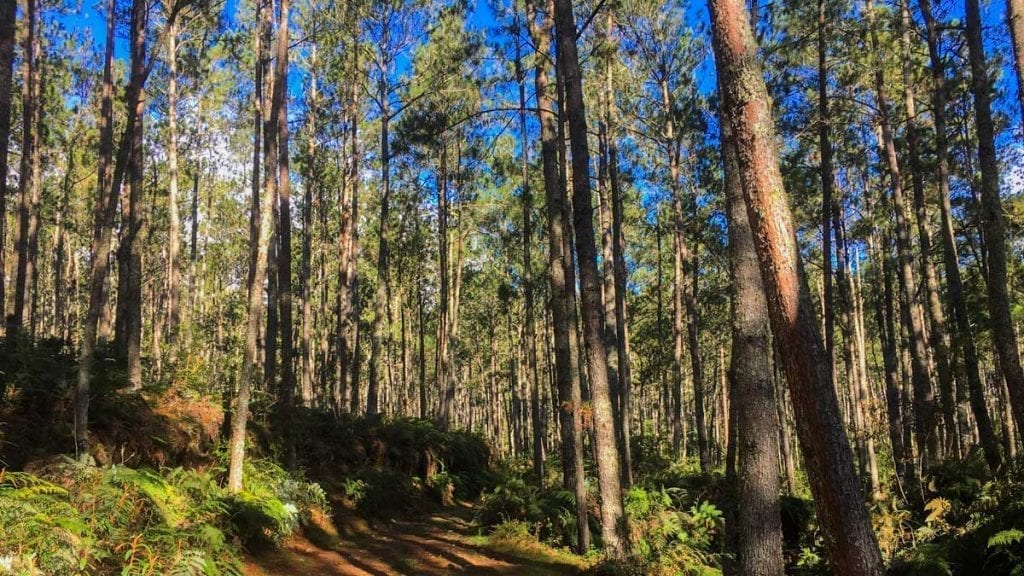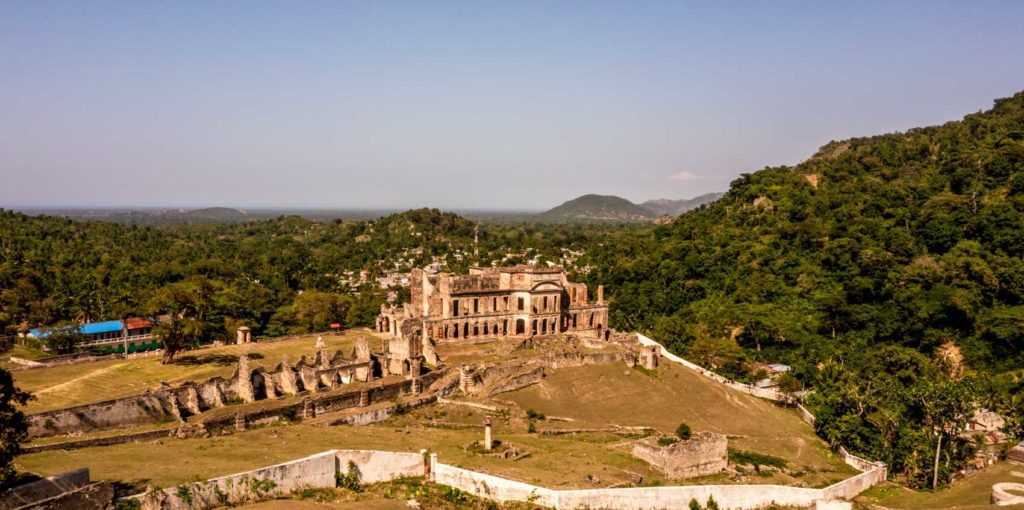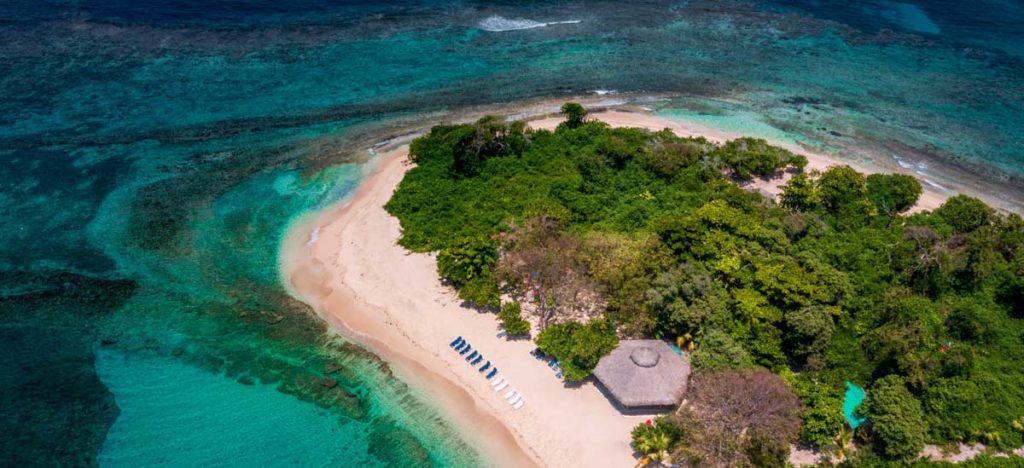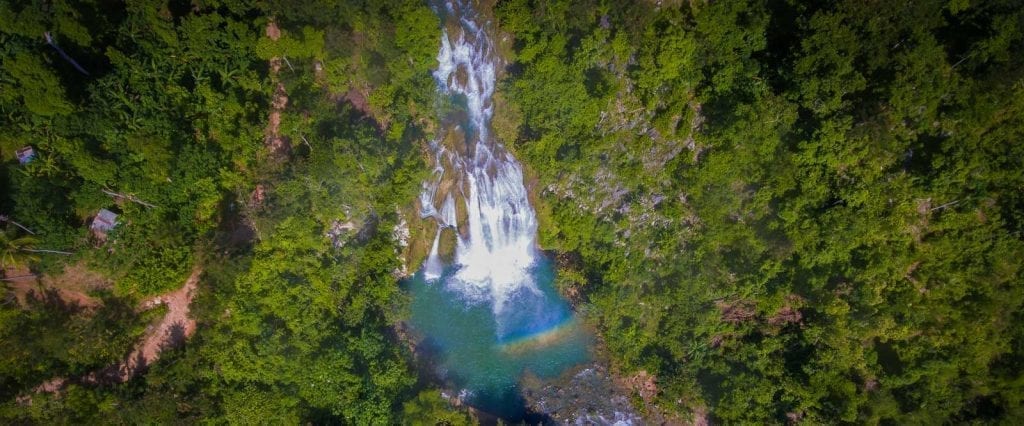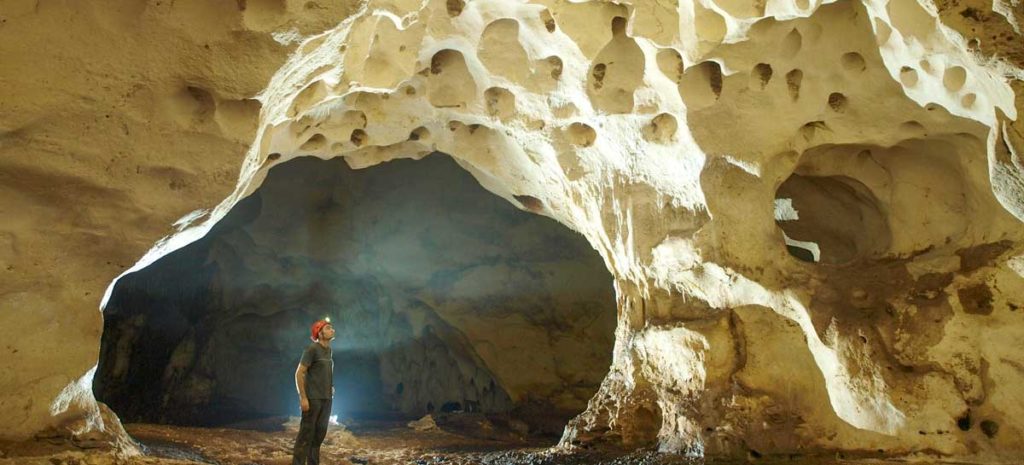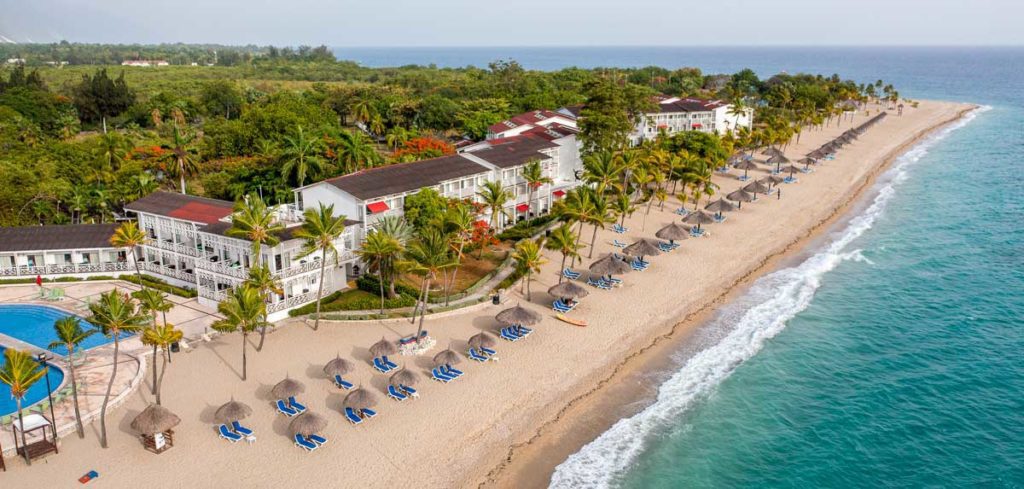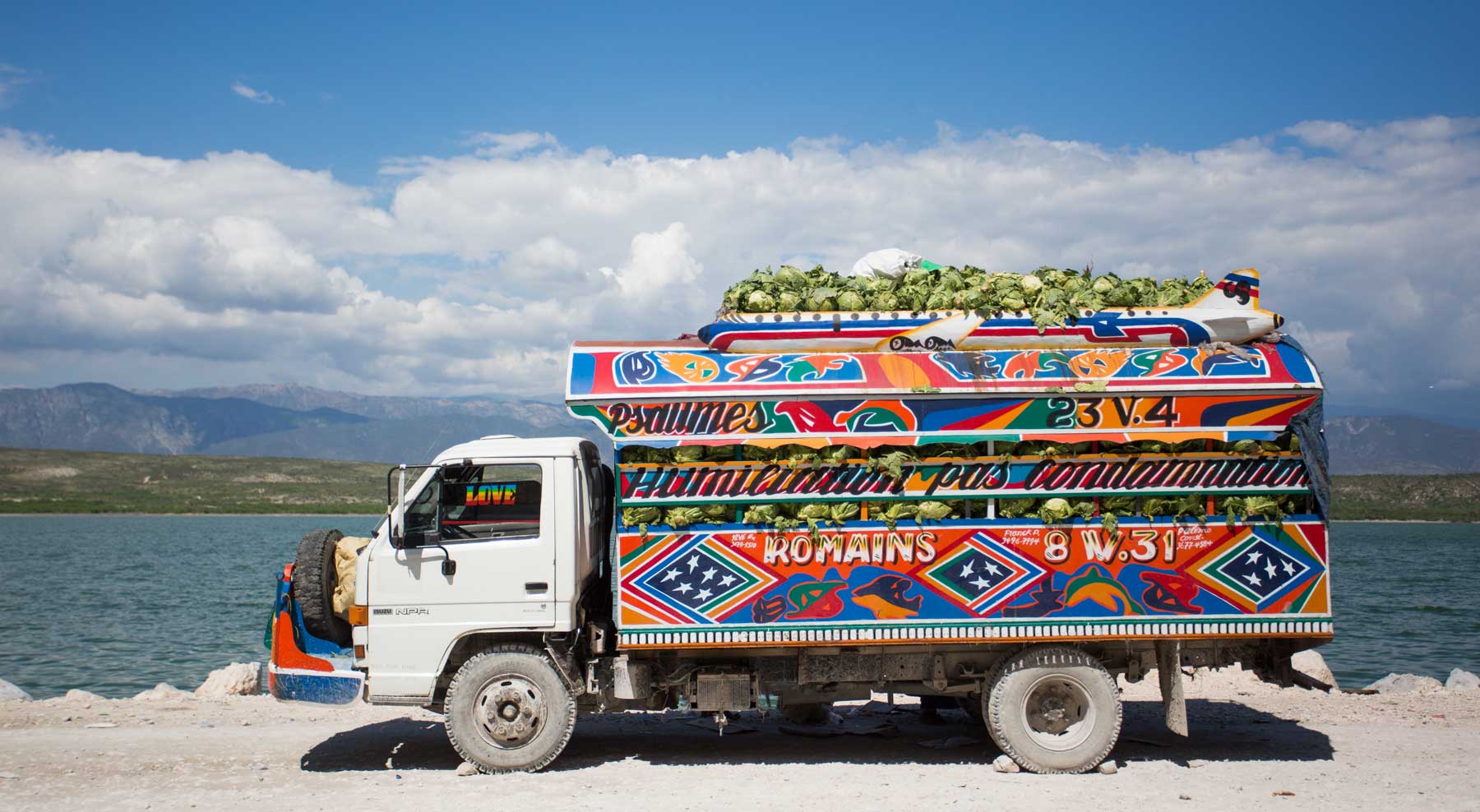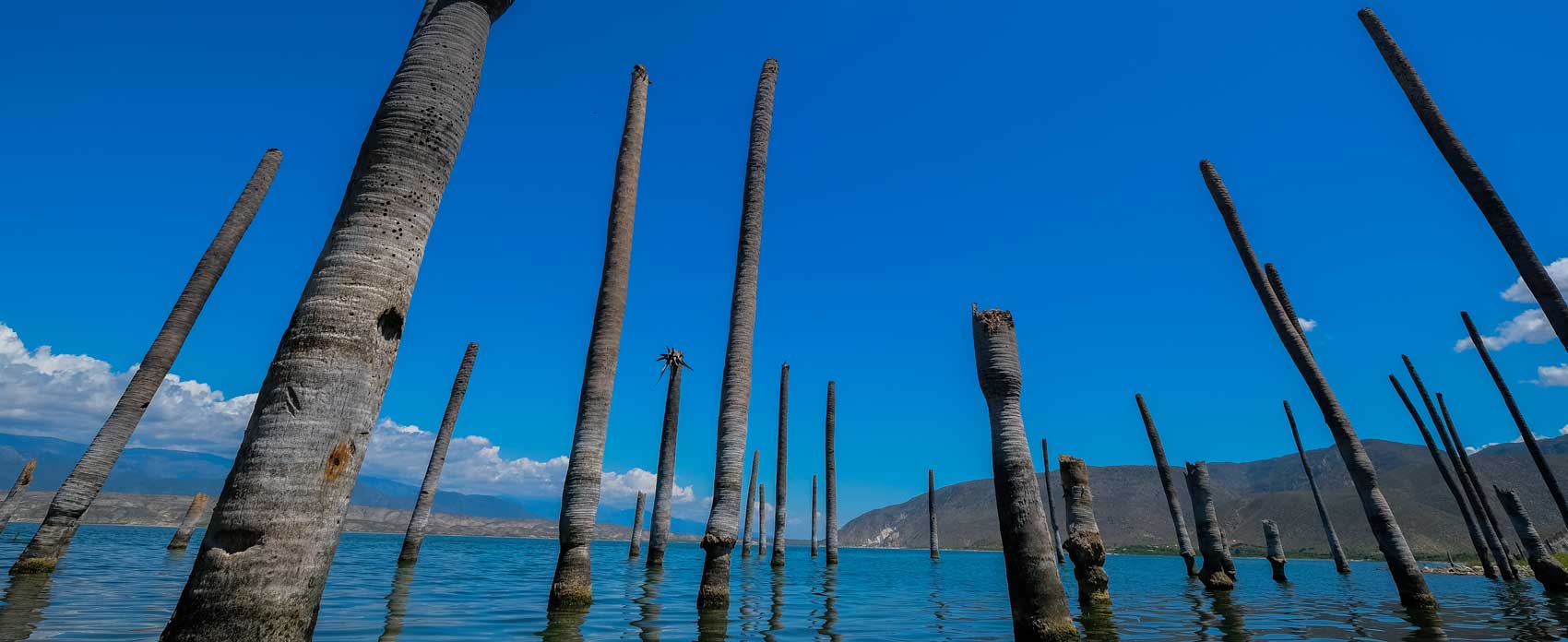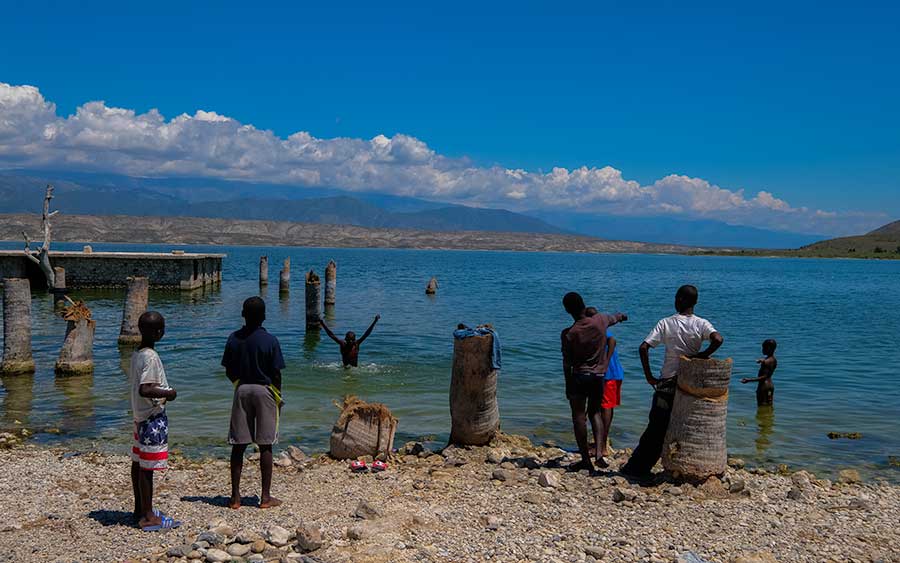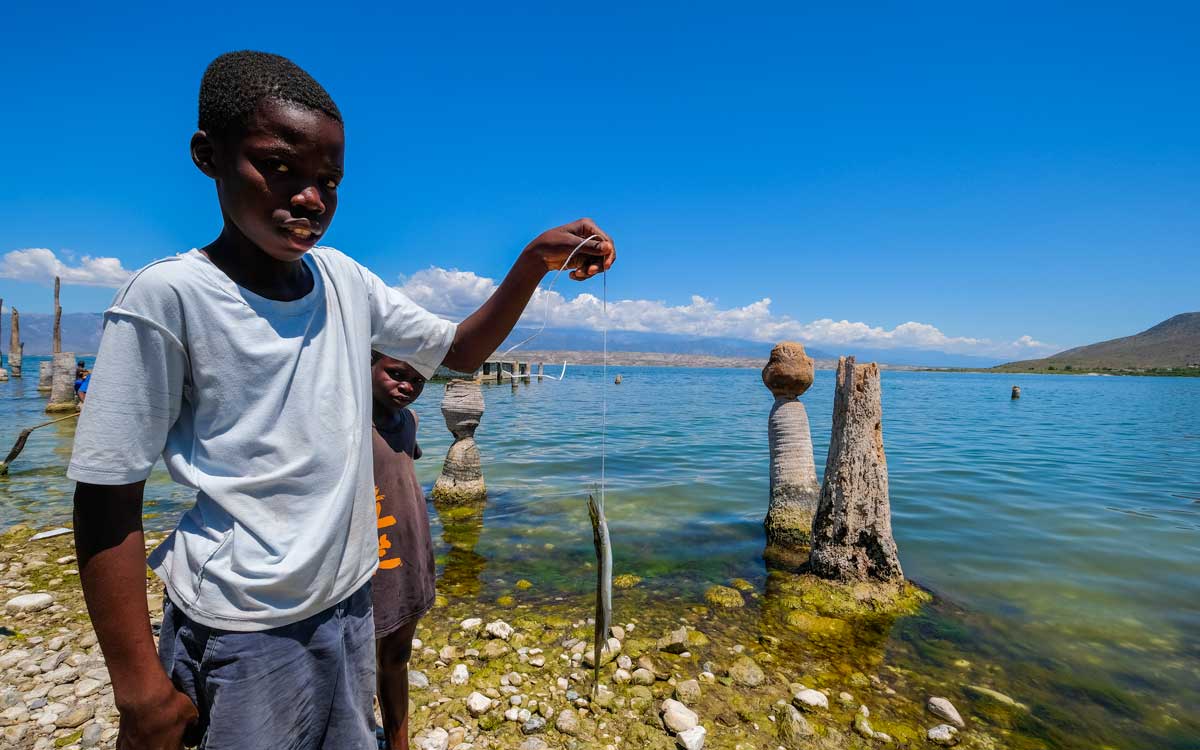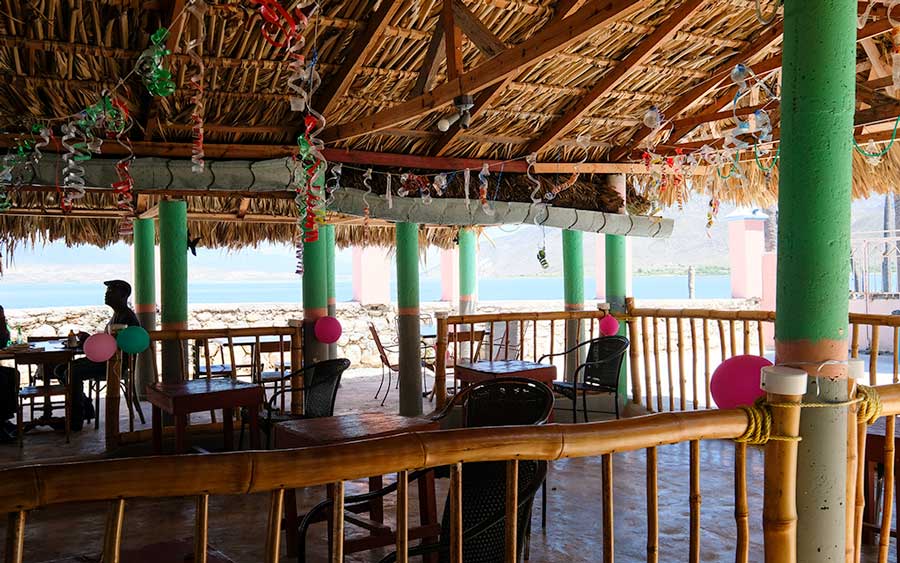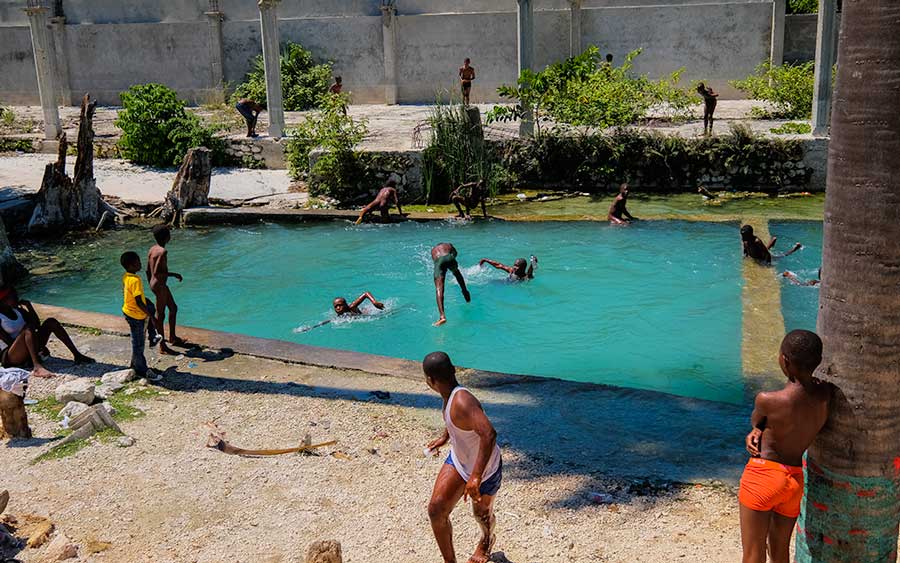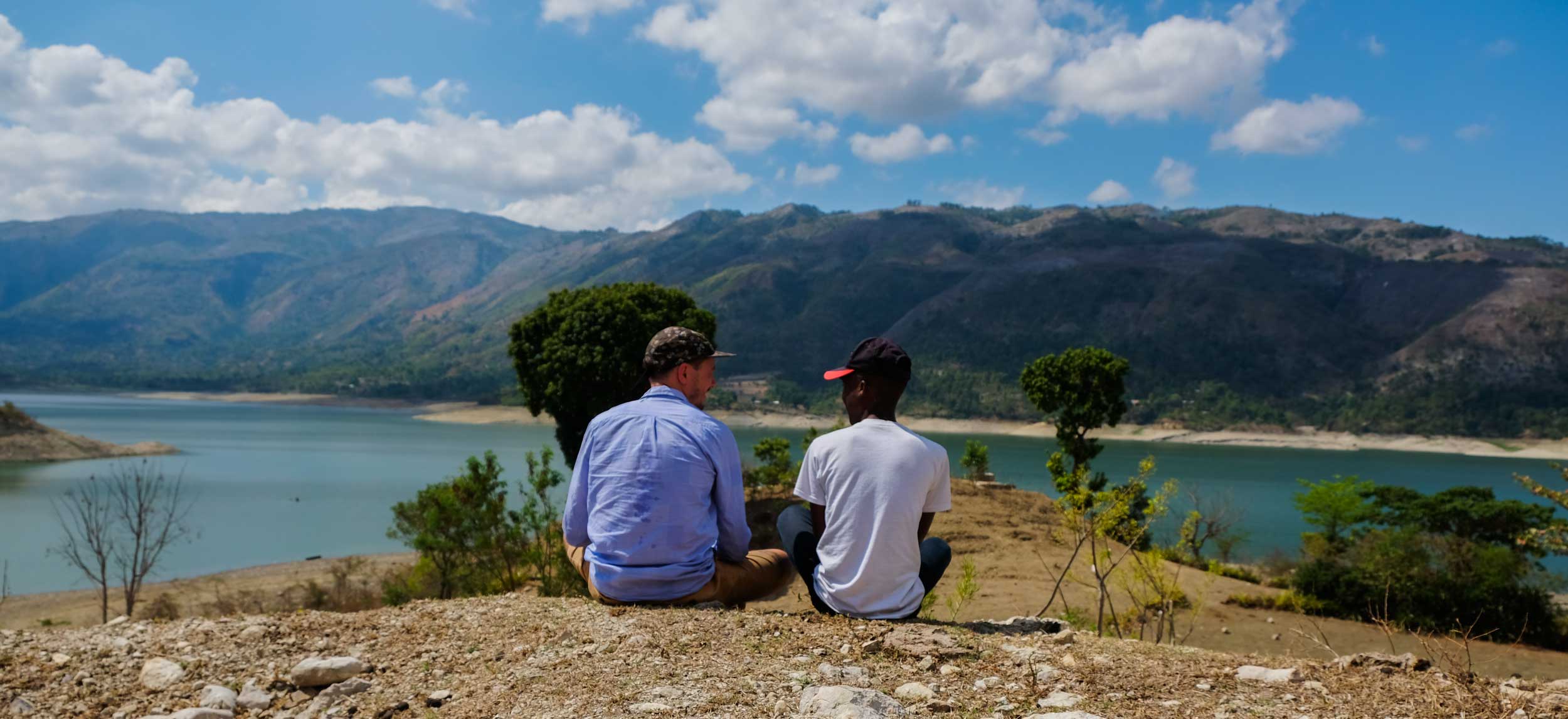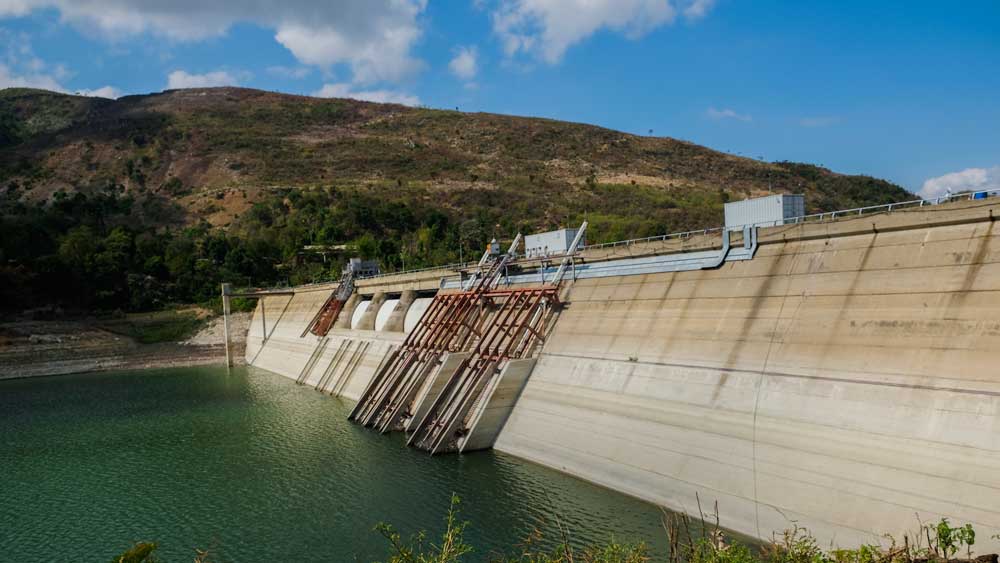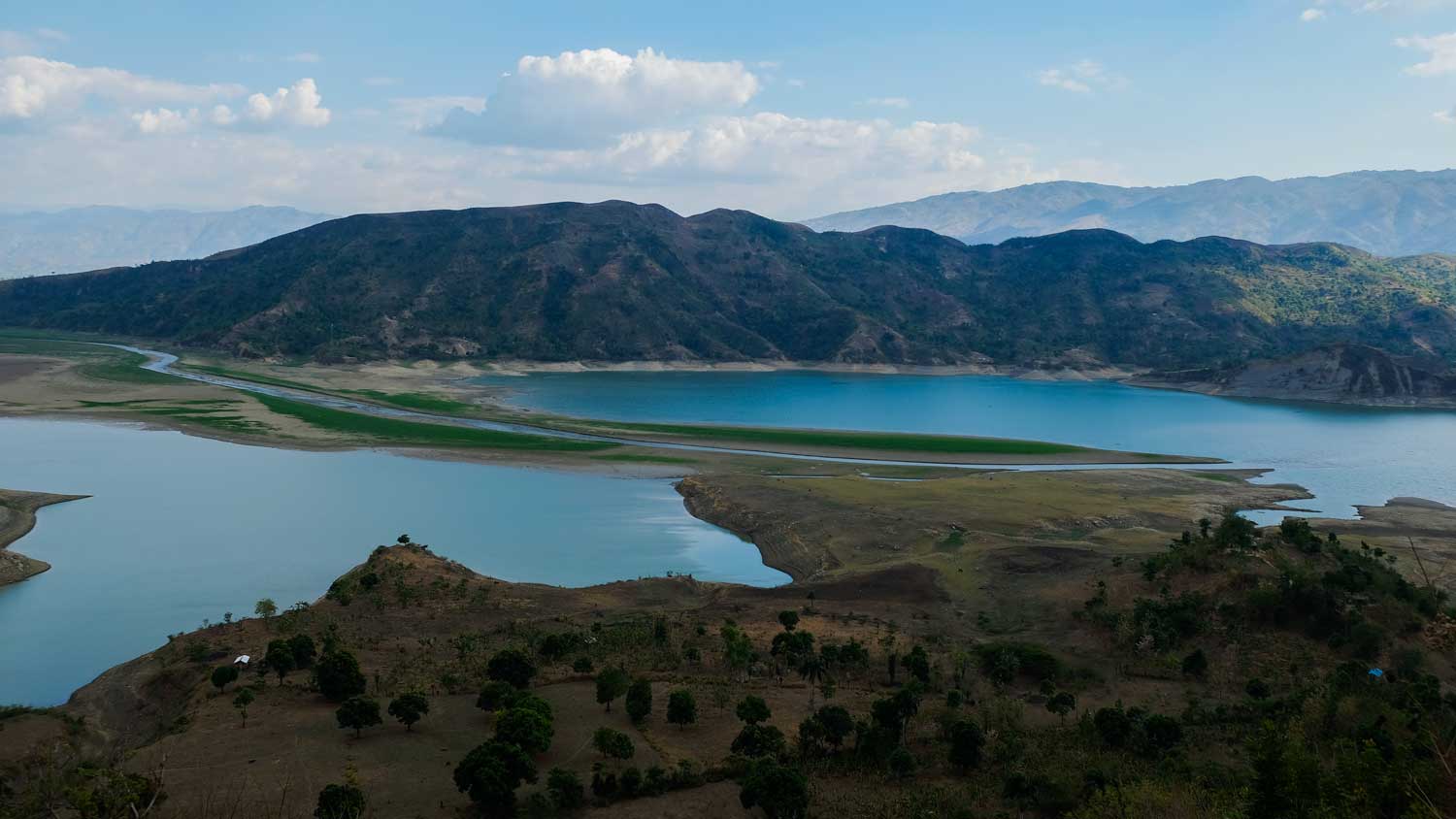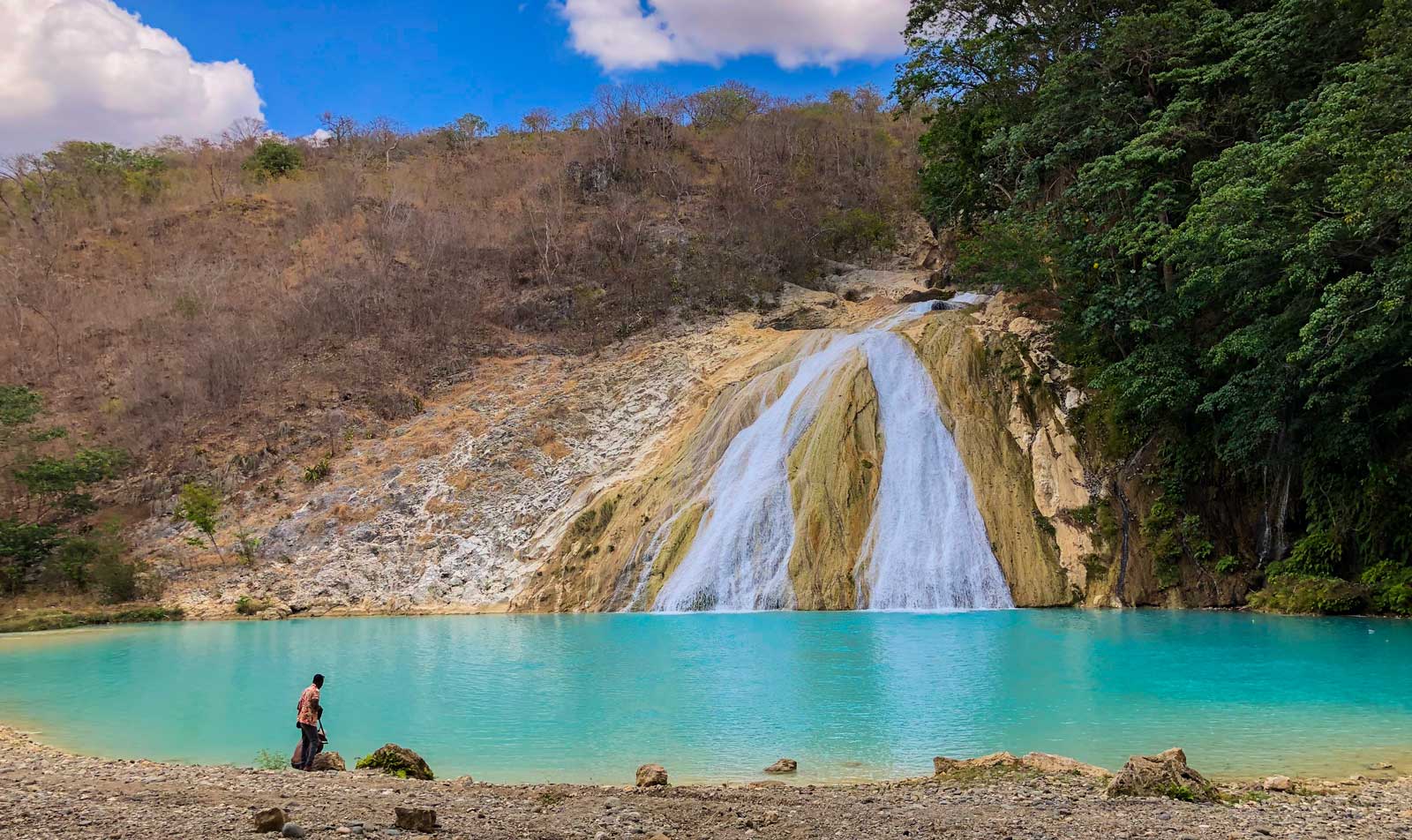
Photo: Anton Lau
Explore the Waterfall and Glittering Grottoes of Bassin Zim
Bassin Zim, located just north of Hinche, is a spectacular natural landmark featuring a cascading waterfall, a chain of turquoise-hued pools, and a network of glittering underground grottoes. While legends whisper of buried treasure, the true riches of Bassin Zim are in plain sight.
The magnificent waterfall at the heart of Bassin Zim doesn’t drop straight down, but instead fans out over the mountainside, forming a wide, veil-like cascade that flows into the basins below. It’s one of the most breathtaking sights in Haiti.
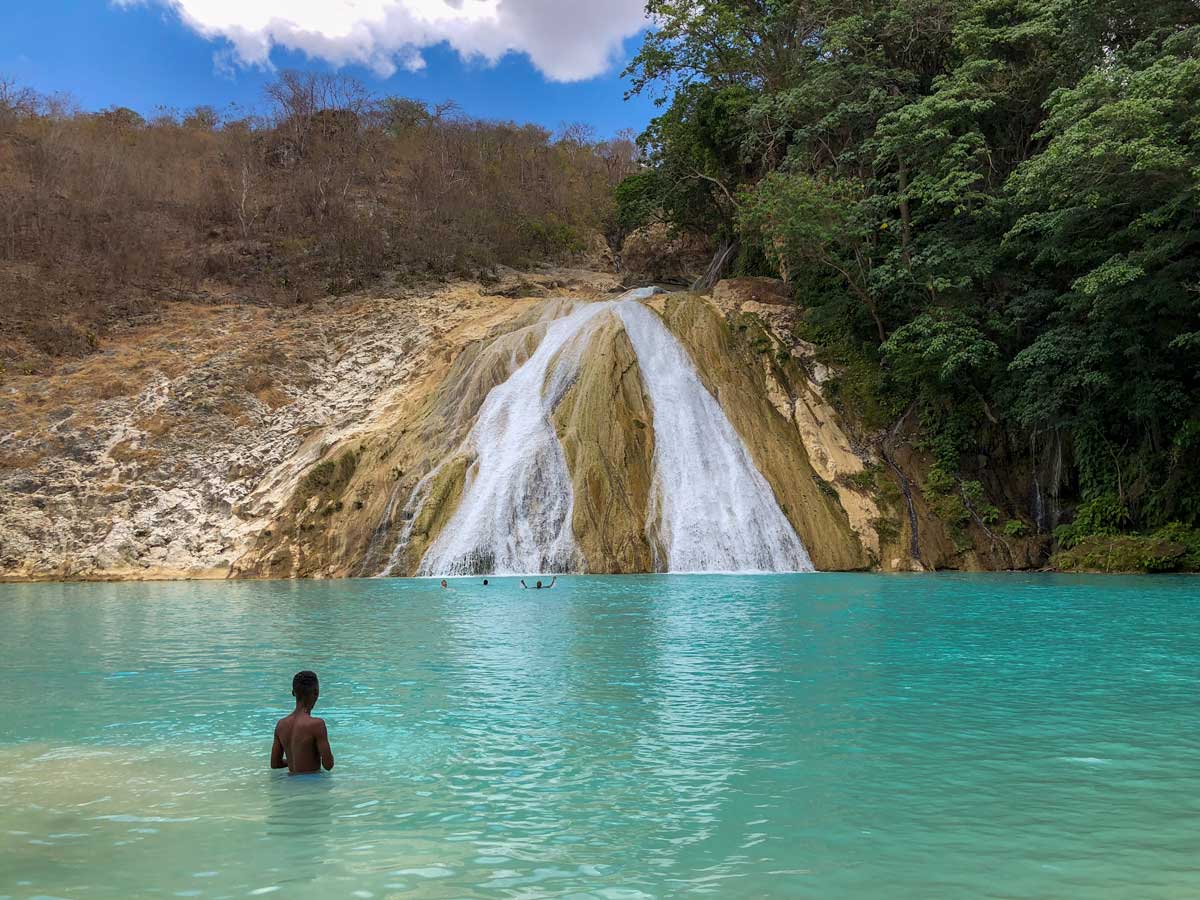
Photo: Anton Lau
A narrow path winds from the basins up to the top of the waterfall. Those who find their way may be lucky enough to watch local divers leaping into the pools below—a daring feat requiring skill and experience. We don’t recommend travelers try it, though—the jump is far more dangerous than it looks, and there are plenty of other adventures to be had at Bassin Zim without taking unnecessary risks.
For many, Bassin Zim carries deep spiritual significance. Some believe that “pure souls” journey here after death to receive their blessings. Others say that the Taíno Amerindians, the island’s first inhabitants, hid great treasures within the basins and caves.
Bassin Zim, Haiti
Photo: Anton Lau
Buried Treasure
Hidden beneath Bassin Zim is a network of high-ceilinged grottos that are just as magical as the waterfall above. Inside, ankle-deep water flows over smooth rocks and ancient stalagmites, while the walls, painted vivid green with moss, glisten in the shifting light. Stalactites hang like chandeliers, and otherworldly rock formations emerge from the cavern floors, shaped over centuries by water and time. For photographers, this setting offers some of the most dramatic and unforgettable shots in Haiti.
The caves at Bassin Zim hold more than just natural beauty—they are also home to ancient Taíno petroglyphs, carvings left behind by the island’s earliest inhabitants. These symbols, etched into the stone, offer a rare glimpse into Haiti’s pre-Columbian past, making the grottoes a site of both natural and cultural significance.
The legends don’t stop there. Some believe that Charlemagne Péralte, the revered leader of Haiti’s anti-occupation resistance, once took refuge in these very caves, using them as a hidden stronghold. While the truth remains unknown, the sense of mystery only adds to Bassin Zim’s allure.
Of course, not everything in these caves is ancient treasure—some grottos have less welcome surprises. While you’re unlikely to stumble upon pirates or gold, there’s a real chance of encountering wasps nesting in the rock formations. A local guide will know which areas to avoid.
Want a closer look at Bassin Zim’s breathtaking waterfalls and hidden grottos? Watch this video for a stunning glimpse into the landscape.
Getting to Bassin Zim
Bassin Zim is located about 35 minutes from Hinche, deep in Haiti’s rural countryside. The road leading to the waterfall is increasingly degraded due to lack of maintenance, so a 4×4 vehicle is highly recommended. If you’re traveling without a car, taking a moto taxi is the easiest option from Hinche.
If you’re coming from Cap-Haïtien, expect a 3-hour drive to Hinche before making your way to Bassin Zim. While the journey is long, it’s worth it for the chance to experience one of Haiti’s most stunning waterfalls year-round.
There are only a few food vendors and no restaurants nearby, so it’s best to bring your own snacks, water, and essentials for the trip. You might find someone selling coconuts, but options are very limited.
Entrance Fees
- Locals: 50 HTG
- Tourists: 250 HTG
Hiring a Guide
While Bassin Zim is open to all visitors, navigating the terrain can be tricky—especially if you plan on swimming. A local guide is highly recommended for safety and to get the best experience.
- Guide fees range from 500-1000 HTG—be sure to negotiate before starting and have the correct bills.
- If you don’t pick a guide yourself, multiple guides may follow you expecting payment. Choose one and politely insist the others leave.
- If swimming, let your guide assist you—they know the safest entry and exit points.
Best Time to Visit
Unlike some waterfalls in Haiti that lose their beauty in the dry season, Bassin Zim remains stunning year-round. Even after rainfall, the water stays clear, unlike Bassin Bleu, which can become murky.
Written by Kelly Paulemon.
Published July 2018.
Updated March 2025.
Find Bassin Zim
External Links
Check out the latest visitor reviews

Looking for some cool things to do?

Paradise for your inbox
Your monthly ticket to Haiti awaits! Get first-hand travel tips, the latest news, and inspiring stories delivered straight to your inbox—no spam, just paradise.

